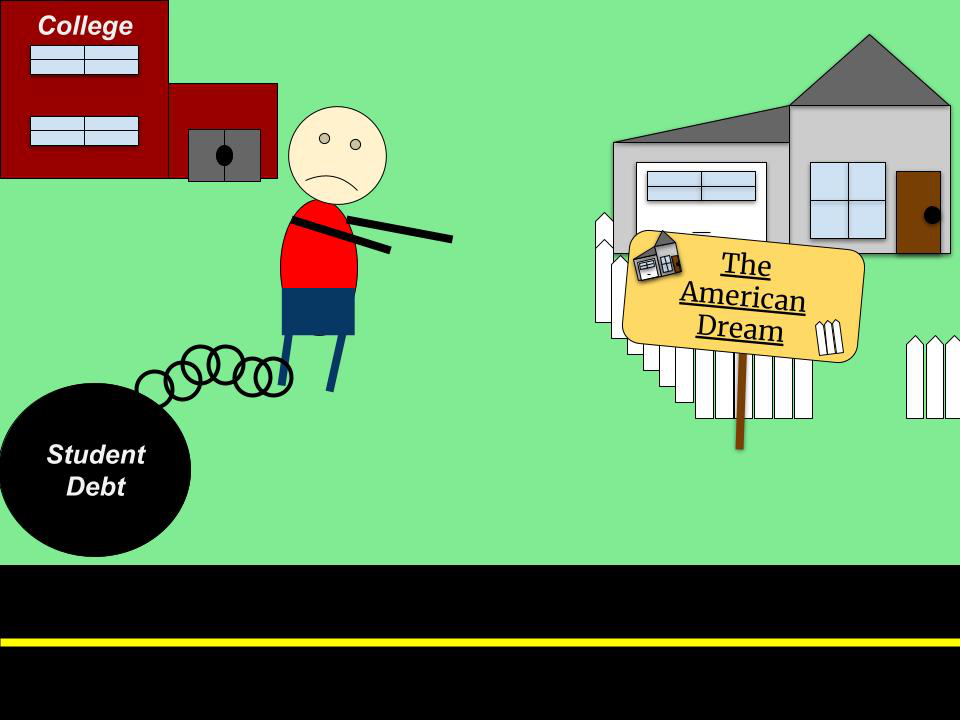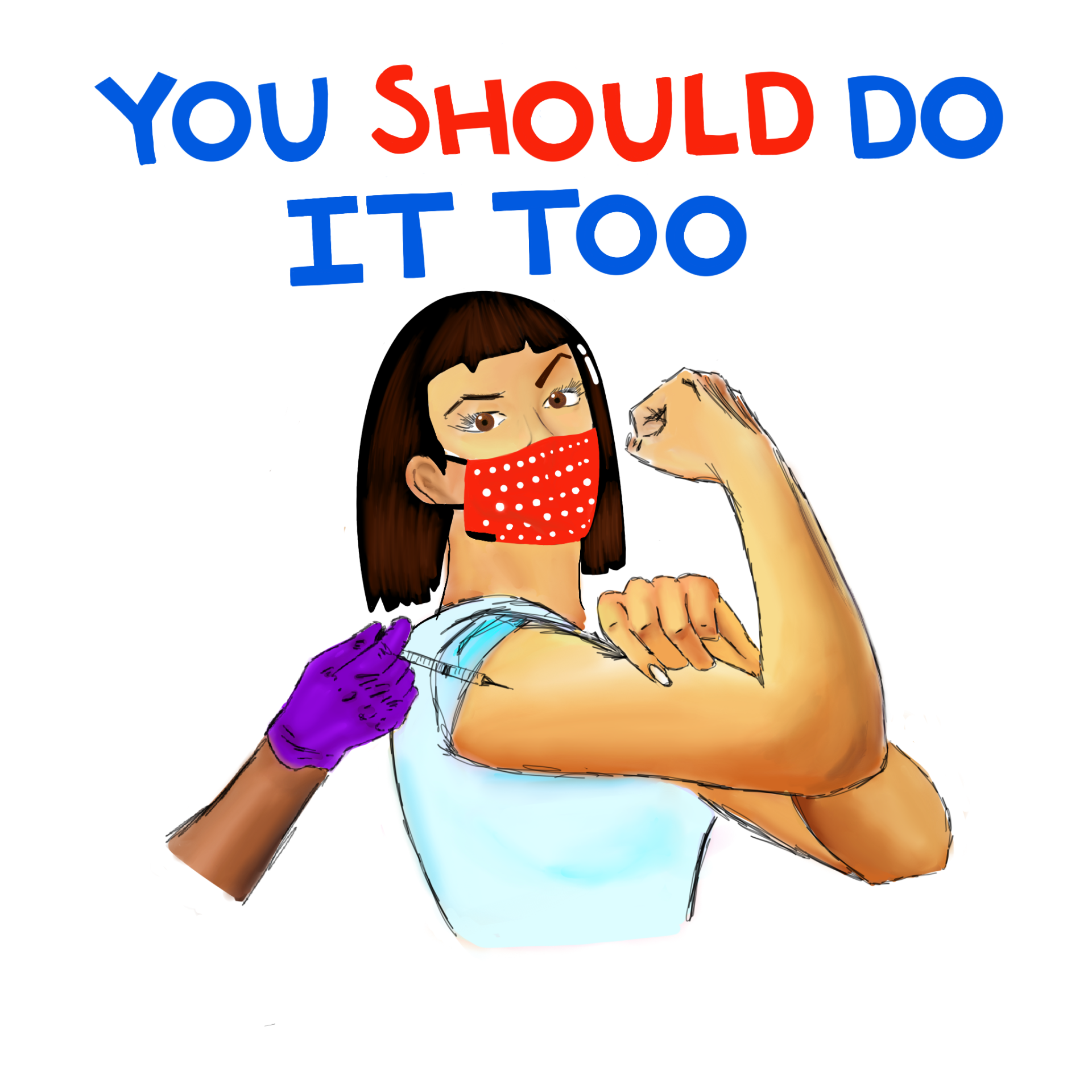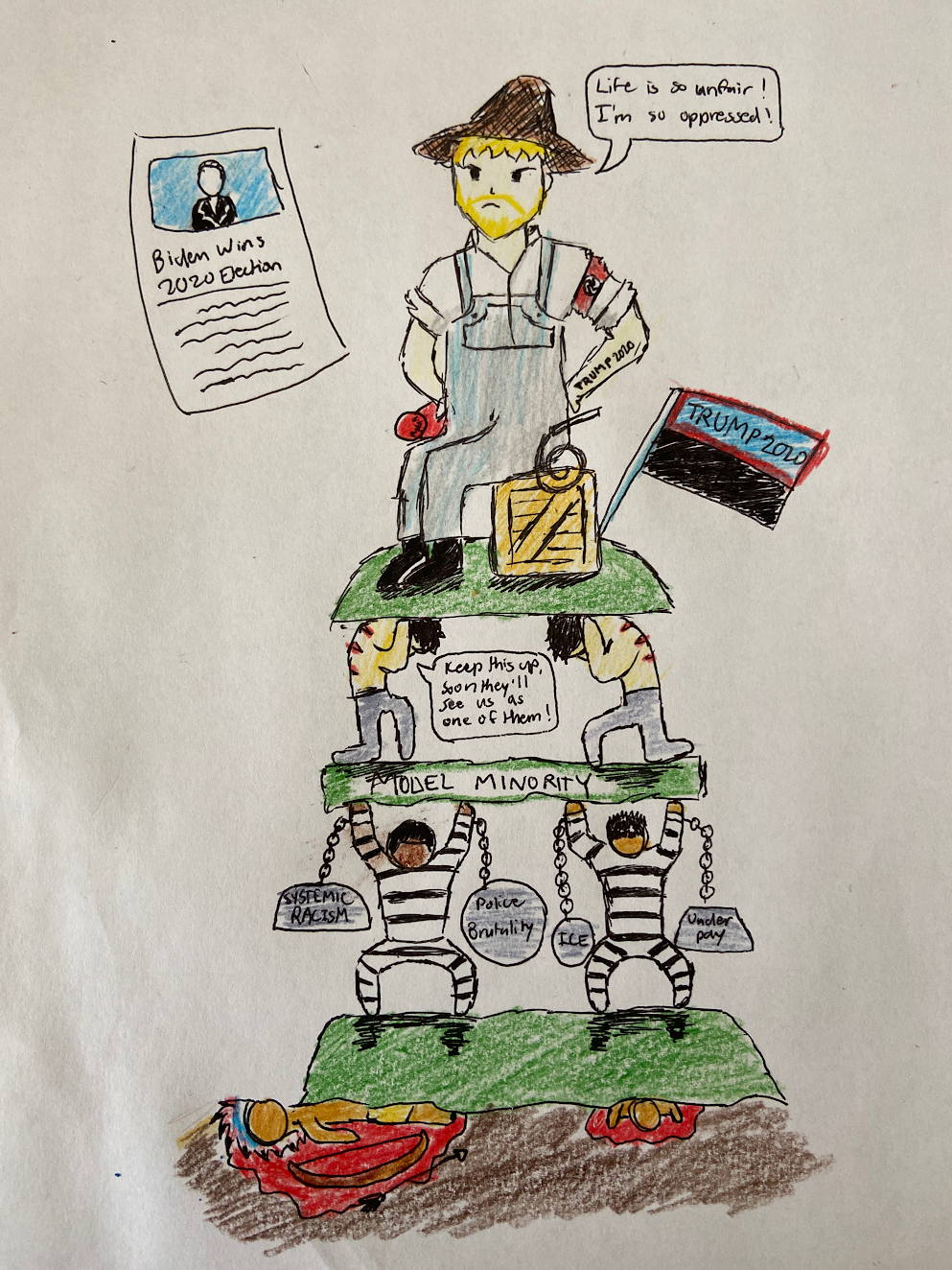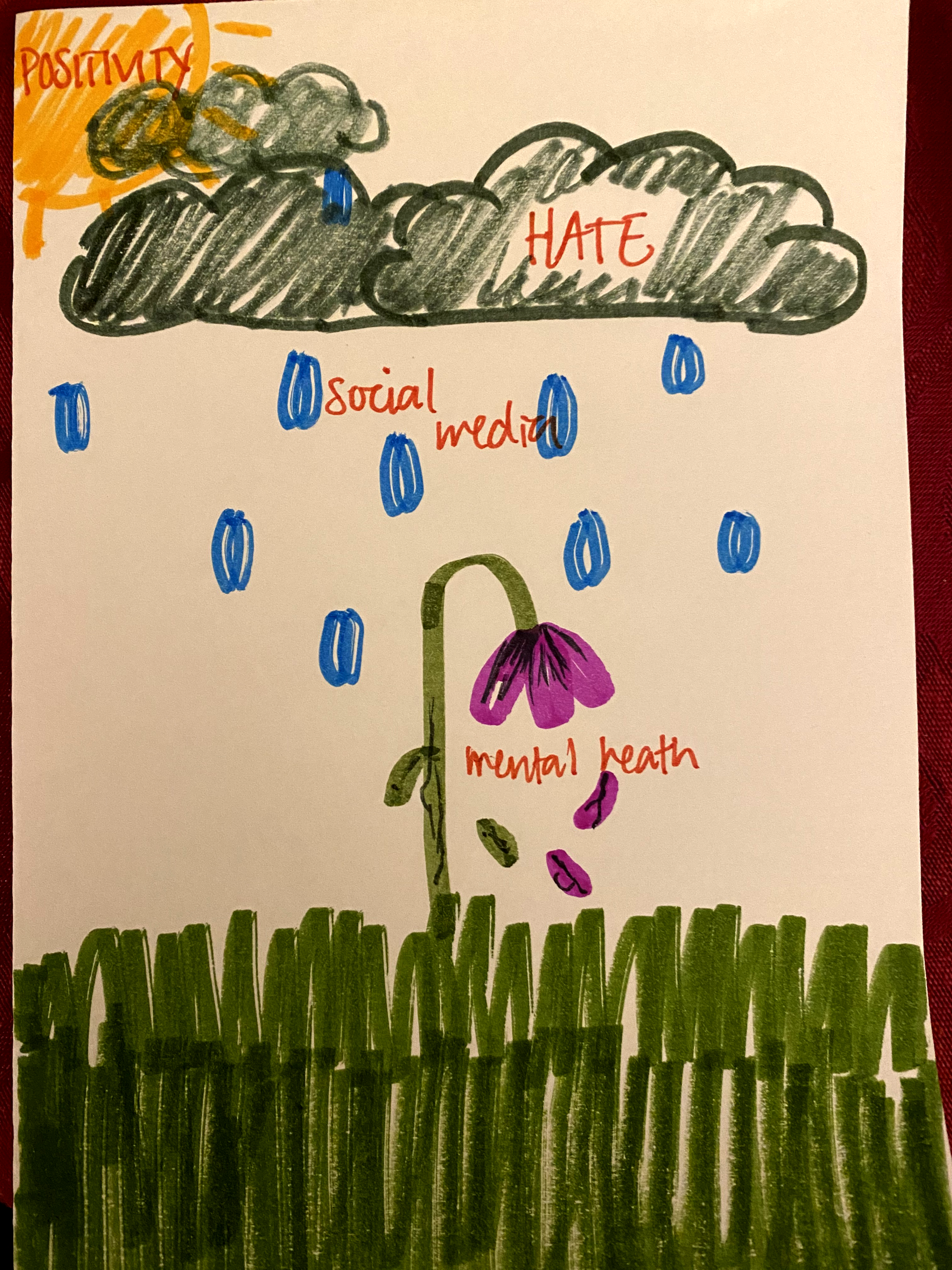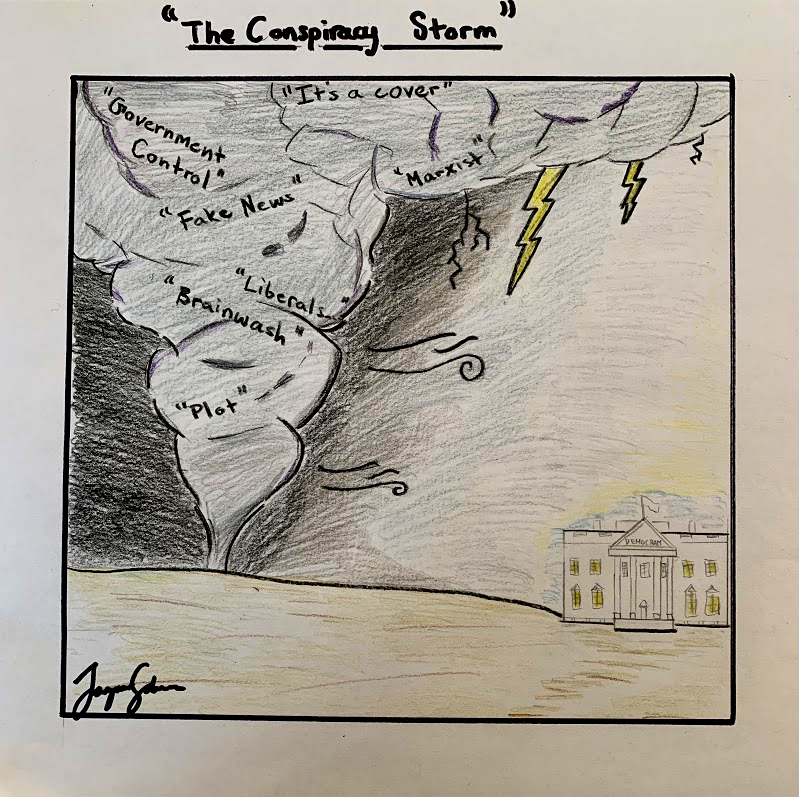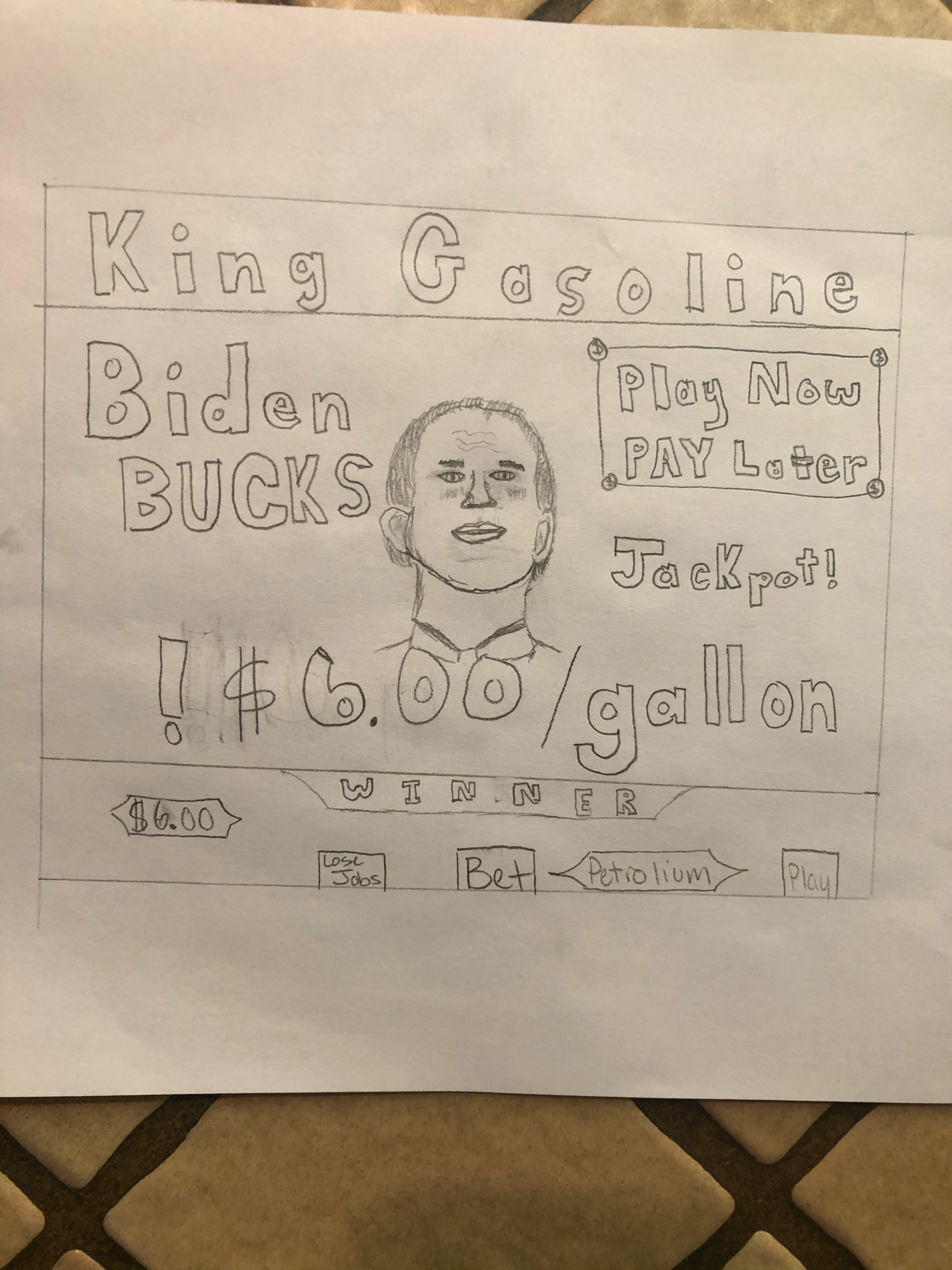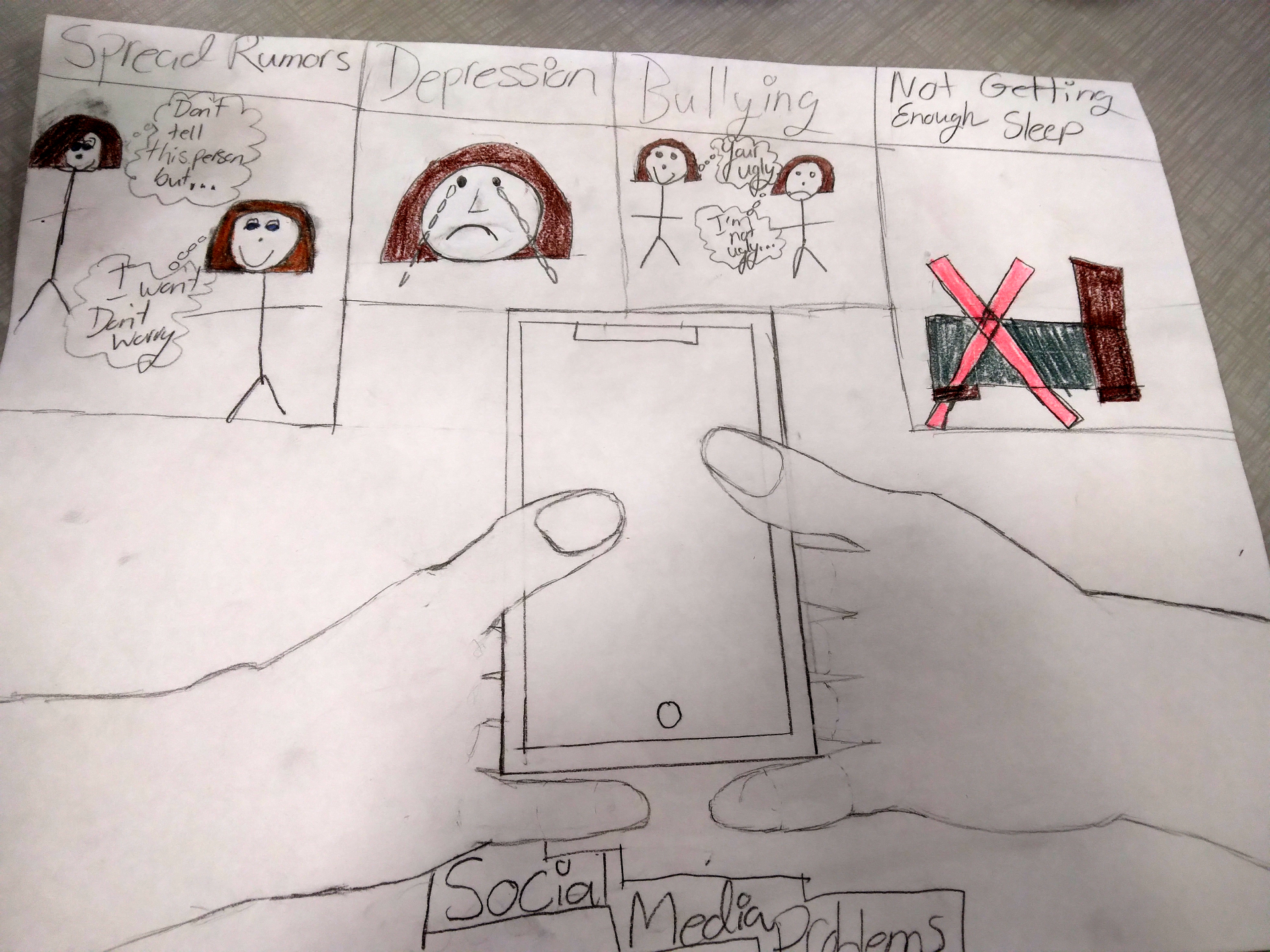Let me start by saying how glad I am that I don't have to pick a winner from any of these cartoons that students submitted as part of KQED's "Political Cartooning With Mark Fiore" Youth Media Challenge.
This challenge invites students in grades 6-12 to submit an original one-panel editorial cartoon about any issue that matters to them. (All submissions are published on KQED’s Youth Media Challenge Showcase, and I’ll try to feature as many as I can throughout the school year.)
There is so much talent here it would be a shame to have to pick just one.
As a long-time cartoonist who remembers my earliest cartoons, I can see potential magic — that may not be immediately apparent to some — in many of these works.
Here (in no particular order of preference) are some of the standouts among the roughly 250 submissions we've received from students living everywhere from here in the Bay Area to Billings, Montana, and Jefferson, Iowa.
(The Youth Media Challenge is accepting submissions until June 2022, so you can still send in your cartoons if you haven't already done so.)
Student debt
Aidan N. does a great job of encapsulating the massive problem of student debt, and I know exactly what the cartoon is trying to say.
One thing I noticed about Aidan's cartoon that takes me back to some of my earlier cartoons: the visual metaphor of the ball and chain.
Multiple submissions we received featured a ball and chain, and that's OK — but try thinking outside the box and push yourself to make your cartoon even more unique. If you want your cartoons to stand out, it's important that they be wholly unique.
Is there another way to represent a challenging or difficult situation? Remember, you can draw anything — maybe next time it could be an alligator latched onto a leg or a bear trap!
Rosie the Riveter
Khushi C. tapped into the classic Rosie the Riveter poster for this pro-vaccination cartoon, one that could also easily be made into a poster.
I love how the syringe doesn't look intimidating or scary — an illustration challenge that can be difficult to pull off!
One thing to keep in mind when using historical images as a basis for a cartoon: Remember there is oftentimes more to the story of the image than what most history books imparted.
To some experts, like Betty Reid Soskin, a 100-year-old park ranger who still leads tours at the Rosie the Riveter World War II Home Front National Historical Park in Richmond, "the story of Rosie the Riveter is a white woman’s story."
Which is another reason I like how Khushi has changed up the imagery.
The arc of oppression in America
I know I said this roundup isn't about awards, but John M. gets my vote for "Most Ambitious Single-Panel Cartoon About the Arc of Oppression in America."
He's trying to say a lot in this cartoon and actually pulls it off!
It might take a while for the reader to absorb it all, but it works, right down to the disturbing and salient portrayal of the Native Americans at the bottom rung of the cartoon's visual hierarchy.
Social media and mental health
Jaidene M. created one of my absolute favorite cartoons among all the submissions.
The simplicity and beauty of this drawing — particularly the wilting flower — is incredibly moving.
One of the challenges a cartoonist always faces is how to clearly convey what the different elements in an illustration represent.
Labeling is one of the simplest ways to do this, but is there another way to show rather than tell what this cartoon is about?
Maybe the clouds can look hateful and mean rather than being labeled "hate."
Conspiracy storm
Jasper S. has drawn one of the most traditional "political cartoons" among this collection.
That tornado definitely looks like trouble.
Remember, you can let your labels and lettering show emotion and movement, too. If I were letters in that storm, I might be a little skewed or curved.
Check out Ralph Steadman, a master illustrator who pours so much emotion into his drawings and lettering.
High gas prices
Justin C. goes after President Biden for high gas prices, and though I may not agree with the message, I really like how he uses the gambling metaphor.
As a side note, the fact that we can see a kitchen counter behind Justin's drawing takes me back to my earliest cartoons, which I drew on the lid of a clothes hamper.
Remember, if you love drawing cartoons, you don't need any fancy equipment or a drafting table!
Social media problems
Madison K. tackles some very difficult issues in this cartoon about social media, and is on the right track by making it a multipanel illustration.
Sometimes a cartoon can be much more effective if you lead the audience through your thought process and what you're trying to say, which can sometimes be better accomplished through a comic book-style format.
Thank you!
Thanks so much to all of you who have submitted cartoons and participated in this challenge. We'll feature more here in the coming months.
Send along your cartoons, and most importantly, keep cartooning!
